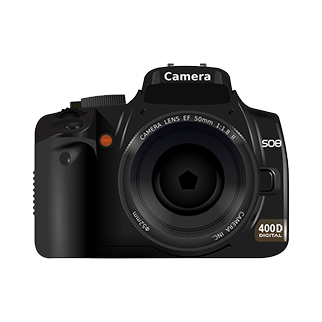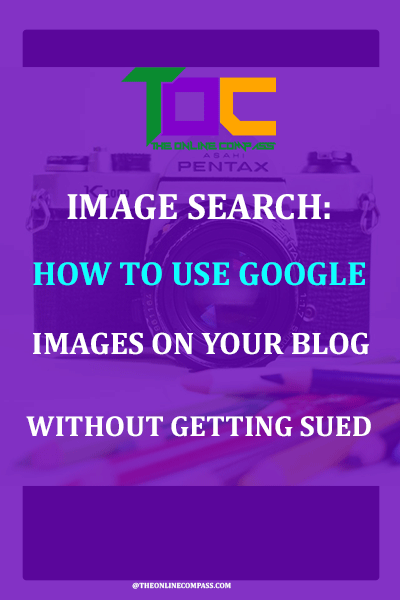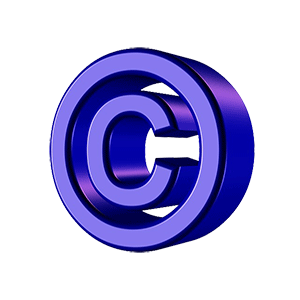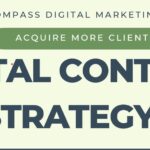Are you sourcing your images correctly?
Every business has laws governing it, with the online business not being an exception. One of the prominent areas in online business subject to law is the use of images you find on google search.
This is what most bloggers are ignorant of. But Ignorant of the law is not an excuse.
So, it’s expected that everyone should be able to take the duty of care that is necessary to stay out of the claws of the law.
Order wise, you find yourself running into difficult situations that would cost you huge sum of money in fine.
This may even end up closing your business, especially if your business is new.
In online business – specifically blogging- we use a lot of images to communicate our messages, because it’s easier to communicate through image than any other way.
On account of this, bloggers are always on the search in google for images to use on their blog.
Unfortunately, many bloggers know little about the blogging world, and have flawed understanding of the copy right law.
And hence, fail to take the necessary step to research the source of the image they find on google search before using them on their blog.
Consequently, this could turn out to be their downfall!
Every image you search on google has a source – it’s put there by somebody -.
It’s either coming from a photographer that has copyrighted his work, or from agency like shutterstock or jetty images, or from individuals that just created it for their blog.
Many bloggers ignorantly believe it’s “fair use” to pick any image they find on the google search and put on their blog.
This practice is unethical, and it has caused a lot of people huge sum of money. Some had even had to close down their business on account of this.
For example, New York Times photographer Robert Caplin sued for American celebrity blogger Perez Hilton because he used his 14 photographs without permission.
He’s suing for $150,000 per picture, which amount to $2.1 million.
And presently, there is a case going on between Julie Demansky and Trump organization.
Julie Demansky is suing the company for using a photograph taken by her on the company website and on their Instagram account.
She took the photo in a rally and registered it with the US copy right law office.
The case was filed on the 22nd June 2017, and she is suing for $150,000.
So, it’s a common thing, and not something we should just brush over and say it doesn’t exist.
Make no mistake, it does exist!
Though many bloggers get slammed with heavy fine for using google images on their blog illegally.
But not many of them are ready to reveal publicly that they were persecuted for using an image illegally.
So, you may be tempted to think that’s all empty threat when you hear about bloggers getting penalized for using images from google search on their.
Ironically some bloggers know the legality of using google search image, but few do what is right to get themselves out of trouble in the future.
If you blindly take images or photo from google search and use on your blog, then you’re heading for trouble.
As arguably as this may be, you’re better off taking steps to protect yourself from trouble by sourcing your images from google search the right way.
In order to keep away from trouble you need to understand some fundamentals of copy right law.
What is copyright?
Most images on google search are copyrighted. Meaning it has a protection that extends to the owner of the original image or photo.
Consequently, using this images on your blog or elsewhere could attract dire consequences.
Such as, fines, prison terms, injunctions and in some cases financial restitutions.
Next time you do a search on google and you find the perfect image you’re looking for, it’s prudent to assume it’s copyrighted.
There are false ideas going around about the use of copyrighted google images.
#1: The first one is that an image is free as long as it’s through google search or online.
Google is only a machine that helps you to search out images online. But there is no guarantee that the image is free for you to use as you wish.
The tricky thing with google images is that there may be a license attach to the usage unless you do an advanced search.
So the safest thing to do is to remember this, “if you didn’t capture the image, then it’s best to assume it’s copyrighted.”
#2: Another myth is that you can use any image you find online and give the owner a credit or a link back.
You cannot use another person’s work without his authorization, even if you link back or give him credit.
You are still under financial liability, if he finds out and decides to sue you.
The best thing to do before you use it is to find the original creator and the copy right owners and seek his permission to use it.
#3: Another false idea is that if the original image is altered, then are not breaching the copy right law.
Picking an image from google search and distorting it by adding your own text, blowing it up, cropping it, overlaying it, blocking the face or even creating a new work from it, does not exonerate you.
The fact is, the underlying work still belongs to the owner. This is the derivative rights. It still confers ownership on the owner.
The right to make reproduction in any manner is the exclusive right of the original creator.
#4: It’s a huge mistake to think an image isn’t copyrighted because it doesn’t have a copyright symbol on it.
All images are protected from creation, and the owner does not lose their copy right even if they don’t use symbol.
In many other countries, copyright law, based on the Berne Convention says copyright exists from the moment of creation.
Though not all creators of images get them registered with the copyright office, perhaps because of the effort it takes.
Nevertheless, all images are copyrighted from the inception of creation.
The difference between the image that is registered with the copyright office and the one that is not registered come into play at the point of paying violation fine.
The creator that registers their images through the government run copyright office, charges penalty that ranges from hundreds of dollars for each image infringement to thousands of dollars!
In fact, you are liable for up to $150,000 for the copyright infringement if the image is registered with the copyright office.
Most bloggers in the bid to meet up their editorial schedule, get clicks and shares, use any image they find online with disregard to the copyright law.
Some this bloggers go under the radar, but not everyone get that lucky!
However, there are instances you can use the image without consent from the owner and without payment of compensation.
This exemption is commonly called “fair use or free use”
Examples of Fair use
I was able to find out a few things while trolling the web for information
The fair use of a copyrighted work includes such activities as reproduction of the work in copies, or by any other means for the purpose of criticism, comment, news reporting, teaching (including multiple copies for classroom use), scholarship, or research.
Usage of copyrighted materials in these manner is not an infringement.
There are factors to consider in determining whether the google images you use on your blog are put into fair use or not.
These include:
- The purpose and character of the use, including whether such use is of a commercial nature or is for nonprofit educational purposes.
- The nature of the copyrighted work.
- The amount and substantiality of the portion used in relation to the copyrighted work as a whole; and
- The effect of the use upon the potential market for or value of the copyrighted work.
An example of this is when you want to review a product, you’ll most likely need the image of the product.
This use will most likely be permitted as fair use because it does not infringe the right of the manufacturer.
Fair use also works for educational purpose. However because a work was used in an educational institution does not make its purpose educational.
For example, uploading an image from the web to a school website for the purpose of teaching a curriculum to the students is educational.
Safest route to take when using images from google search to avoid being sued.
In addition to fair use, there are other route you can take to protect yourself from legal matters. These are:
#1: Find out who the original owner of the image is and seek his consent to use it.
The problem with finding the owner of the image though, is most times the image would have been shared many times making it difficult to know the original source.
However, there is a way to go about this. Do a “reverse image search.” And if you’re able to find out who owns it, you can reach out to them directly via email or through their website
#2: Use Images and photographs in public domain.
These images are not copyrighted because the person has dedicated the work to the public domain by waiving all of his or her rights to the work worldwide under copyright law, including all related and neighboring rights, to the extent allowed by law.
Not only that, sometimes the creator eligibility for copyright might have expired.
Because Copyright law is granted only for a certain period.
The minimum in some countries is 50 years after the creator’s death, while in some other countries is 70 years.
Apart from the above reason, there are some other reasons why the image in public domain is not copyrighted.
These are:
- The copy right owner fail to follow copyright renewal rules.
- Or the work is does not fall under the copyright law.
#3: Use free stock images.
Most images in free stock photo sites have the symbol CCo or CC (creative common license).
And all photos in public domain also fall under the Creative Commons CC0 license. That means you can copy, modify, and distribute any photo on the site, even for commercial purposes, all without asking permission!
Creative common license photos can be used for free without providing attribution to the photographers.
Although it is not required, it’s always appreciated when you can provide attribution.
#4: Use a paid stock photo to make sure you have permission.
#5. And the best of all is to create your own images.
It’s better to pay a little for premium photo than to face a law suit.
There are many free tools online available online you can use for creating your image that does not require prior technical skills.
CONCLUSION:
Have you used images in making a blog/website without really checking if it was copyrighted?
Most images on google search are copyrighted, and are guided fiercely by the creators, who are ready to ferociously go after any blogger that violates this copyright law.
Henceforth, use google image with great caution on your blog.












Smart advice Eki! I only use my own travel photos on Blogging From Paradise. For guest posts, pixabey it is, to save myself loads of headaches. Rocking post buddy!
Ryan
Using your own photos is the safest way to go. Thanks, Ryan!
This is such a great reminder of a post about copyrighting. Thank you! -Suzanne
Thanks for refreshing my memory about copyright!
It is certainly something to pay attention to.
This is really helpful information and I love how you broke it down. I work in marketing and photo copyrights can often be overlooked or oversimplified.
Cheers, Sarah Camille // SCsScoop.com
I’m so glad I read this! A lot of information that I didn’t know about. There are quite a few blogger friends that I need to share this with!
Wow I didn’t know all of this but such a great post to think about! I don’t think I have ever used google images but I need to go back and double check to be sure!
Xo-Lisa
http://www.thatssodarling.com